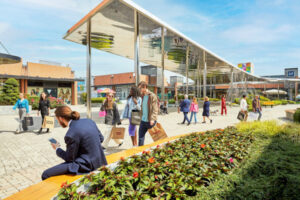By Dolores Bañón
In the retail world, brands have, for some time, pursued a carefully defined goal: the establishment of an emotional connection with their customers. But, what exactly does that connection mean, and how is it achieved?
A visit to the shopping center these days involves much more than the simple process of buying or consuming. Largely due to the rise in e-commerce and the advent of the digital revolution, consumers who physically visit brick-and-mortar stores are in search of more than just products and services. They are looking for fun, entertainment, and practicality that fit with their lifestyles. The infinite possibilities offered by the internet to find information about products, compare prices, and share opinions with other users have forced shopping centers to rethink their consumer connection strategies.
Sociability and shopping should not be separated. In fact, the shopping center has become the modern meeting place, which is very clear when we talk about Millennials and Centennials (Generation Z). Although, as consumers who are the most familiar with online searches and comparisons, with collaborative consumption via social media, and the use of mobile apps, young people continue to be attracted to the shopping center as a place to pass the time and, above all, enjoy experiences.
An emotional connection requires consumers to identify with the values of a given brand. The shopping center is a part of our lives and our memories; it is part of who we are, and, therefore, it must meet the critical requirements of today’s consumers, such as environmental awareness and an advanced technological experience before, during, and after the buying process. Artificial intelligence, for example, already enables the personalization of consumer relations and facilitates fast and efficient vehicle parking. Tools like virtual and augmented reality (to see how clothing fits without having to visit the changing room, for example), the use of interactive screens, self-service checkout, and geolocation also contribute to enriching the shopping center experience.
In the years to come, we will see more and more omni-channel experiences that use mobile and IoT devices to offer customers discounts and promos in real time, while they visit stores or check the schedules of children’s activities online. Because starting the purchasing process on one channel and finishing it on another is increasingly common, we must facilitate integration between the website, the physical store, and mobile apps if we want to respond to the needs of the new, always-connected consumer.
Beyond technology, it is still important to offer comfort, open spaces, useful services (such as collection points for products purchased online), and a wide range of leisure and dining options that satisfy the expectations of all types of visitors. The most innovative shopping centers are exploring new, more flexible uses of space, from temporary exhibitions to concerts, pop-up stores, fitness centers, and relaxation spas.
Give customers a reason to come back. That should be the driving force motivating the modern shopping center in pursuit of long-term emotional connections with customers.





